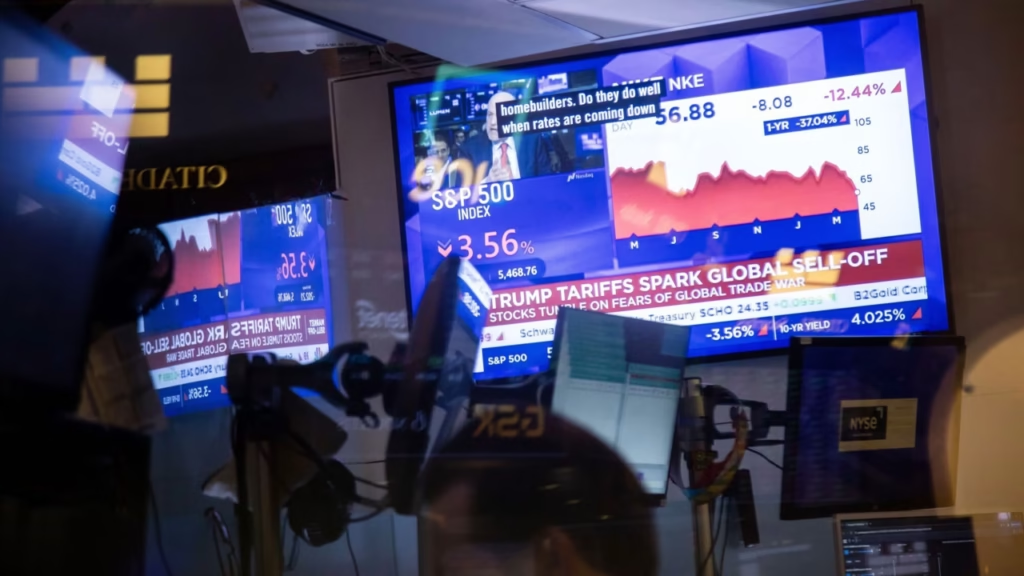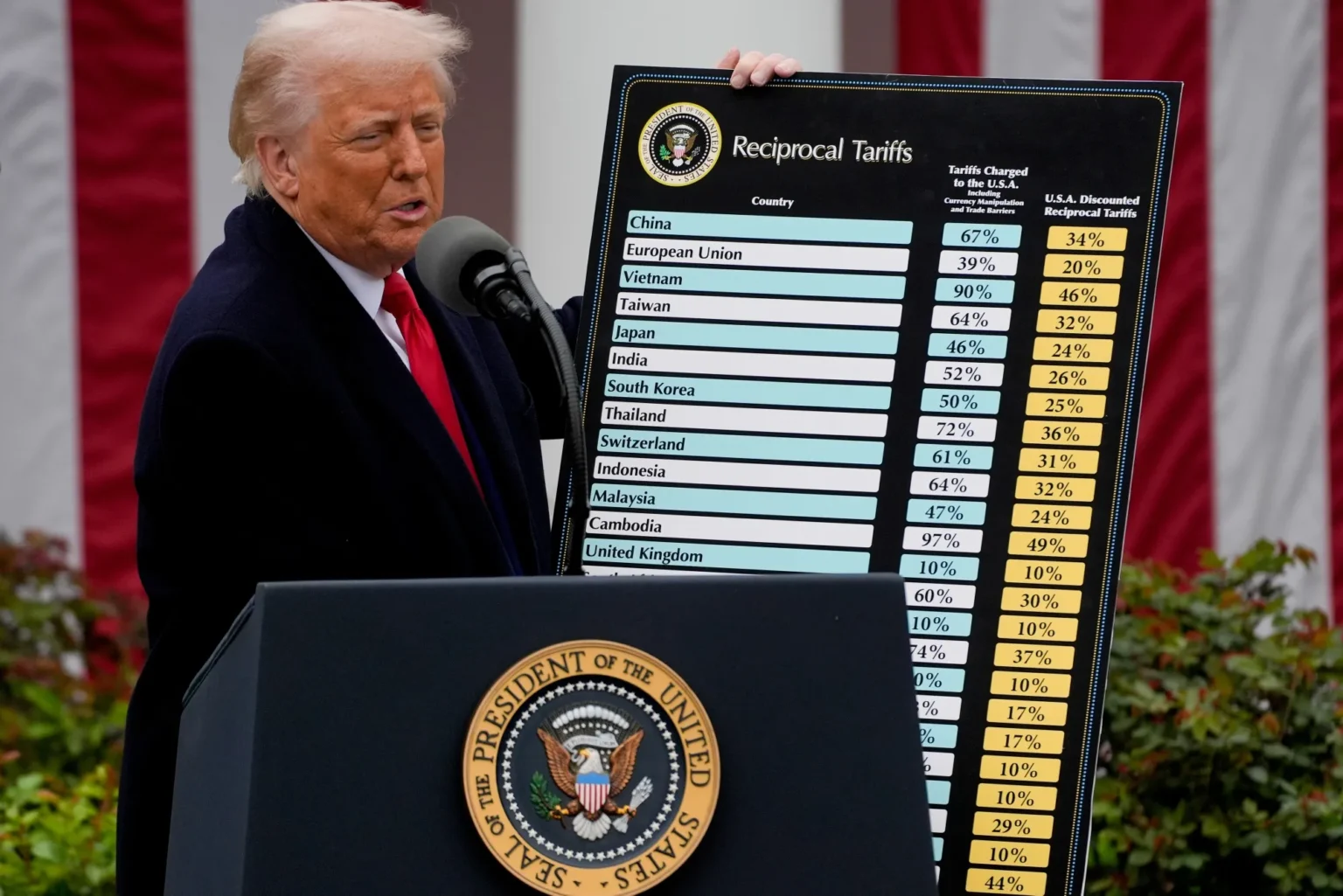Global financial markets took a sharp downturn following President Donald Trump’s announcement of sweeping new reciprocal tariffs, sparking fears of a prolonged trade war and deepening concerns over a potential global economic slowdown.
Wall Street saw one of its steepest drops this year, with technology stocks leading the decline. The U.S. dollar weakened, oil prices plunged, and investors rushed to the safety of government bonds as uncertainty gripped global markets.
Tariffs Trigger Global Shockwaves
The Trump administration introduced a new 10% baseline tariff on imported goods, coupled with steep reciprocal tariffs targeting multiple countries accused of maintaining unfair trade barriers. The scale and timing of the tariffs shook investor confidence, especially with the global economy already strained by post-pandemic inflation and ongoing geopolitical tensions.
“These measures represent a significant threat to global growth,” said Nigel Green, CEO of financial advisory giant deVere Group. “This is how you sabotage the world’s economic engine while claiming to supercharge it.”
Technology Sector Suffers Major Losses
The tech-heavy Nasdaq plummeted by more than 5%, with major firms like Apple and Amazon among the hardest hit. Apple dropped 9.2% due to new tariffs affecting its manufacturing base in China, while Amazon declined 7.9%, Nvidia fell 6.9%, and Microsoft slid 1.5%.

This comes after months of concern surrounding the “Magnificent Seven” tech giants, which have already lost trillions in market capitalization amid a volatile economic climate.
U.S. Indexes Tumble
The fallout extended across all major U.S. indexes:
- Dow Jones Industrial Average: Dropped 1,317.59 points (3.12%) to close at 40,909.33
- S&P 500: Fell 227.17 points (4.01%) to 5,443.80
- Nasdaq Composite: Plunged 912.44 points (5.18%) to 16,688.61
The CBOE Volatility Index, often referred to as Wall Street’s “fear gauge,” jumped to a three-week high of 26.91 points.
Global Impact: Europe and Asia Reel
The European Union was hit with a 20% reciprocal levy, causing the STOXX 600 index to drop by 2.57%.
Asia, however, bore the brunt of the impact. Trump’s tariffs targeted key Asian economies:
- China: 34% tariff
- Japan: 24%
- South Korea: 25%
- Vietnam: 46%
Vietnamese markets dropped 6.7%, while Japan’s Nikkei 225 index fell 2.8%. Despite the pressure, Vietnamese Prime Minister Pham Minh Chinh reaffirmed the country’s commitment to achieving at least 8% economic growth this year.
Bond Yields Slide as Investors Seek Safety
The market turmoil prompted a surge in demand for safe-haven assets. U.S. Treasury yields fell significantly, with the benchmark 10-year note dropping 15.3 basis points to 4.042%—its biggest one-day decline since August 2. It briefly touched 4.004%, the lowest since mid-October.
Germany’s 10-year bond yield also slipped by 7.5 basis points to 2.65%, reaching a level not seen since March.
Analysts predict that if global recession risks rise, central banks may respond by slashing interest rates—a move that typically boosts bond markets.
Economists Sound the Alarm
Major financial institutions and credit rating agencies reacted quickly. Fitch Ratings called the tariffs a “game-changer” for the U.S. and global economies, while Deutsche Bank described the move as a “once in a lifetime” event that could shave 1% to 1.5% off U.S. GDP this year.
“If these tariffs stay in place long-term, you can throw most economic forecasts out the window,” said Olu Sonola, head of U.S. economic research at Fitch. The agency later downgraded China’s credit rating, citing the U.S. tariffs as a driving factor.
Oil Prices Collapse
Energy markets were also hit hard.
- U.S. crude (CLc1): Fell 6.5% to $67.05 per barrel
- Brent crude (LCOc1): Dropped 6.24% to $70.27 per barrel
The S&P 500 energy sector lost more than 6%, amplifying the broader market decline.
Conclusion:
The latest tariffs from the U.S. administration have triggered widespread market panic, raising the risk of a full-blown trade war and potential global recession. As central banks and world leaders scramble to respond, investors remain on edge, watching for signs of stabilization—or further disruption.




